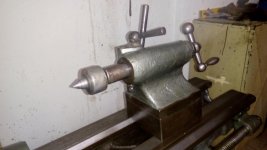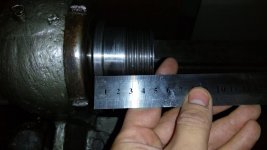DimitrisLamia
Plastic
- Joined
- Sep 19, 2016
Good day everyone, i have bought a lathe that i have partialy refurbish but i still don't know what lathe it is.
It looks like 1960 boxford but i have not seen any sing, serial number or brand on it..
It must have some kind of bolted plate but must have been removed!
Please help me finding out what lathe this is.
All screws are imperial and the headstock bearings are sintered bronze with taper, tighting the outer rings tightens the shaft vise versa.
Thank you in advanced!!





It looks like 1960 boxford but i have not seen any sing, serial number or brand on it..
It must have some kind of bolted plate but must have been removed!
Please help me finding out what lathe this is.
All screws are imperial and the headstock bearings are sintered bronze with taper, tighting the outer rings tightens the shaft vise versa.
Thank you in advanced!!






